|

Belgian Milk Sheep Ewe
Images courtesy of
Frank De Smedt and
Vlaamse hobbyfokkers van geiten en
schapen


Beltex rams
Images courtesy of the
Beltex Sheep Society


Bergamasca lambs

Beulah Speckled-Faced

Berrichon du Cher ram
Paris Champion 2003
Image courtesy of
Graham's Strathallan Flock

Black Hawaiian sheep
Image courtesy of Buffalo Creek Farm

Blackheaded Persian ewes

Black Welsh Mountain ewe
Image courtesy of American
Black Welsh Mountain Sheep
Association and Joannie Livermore
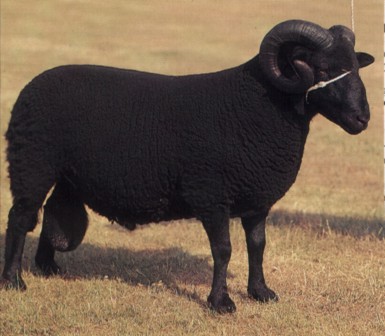
Black Welsh Mountain ram
Image courtesy of
EAAP-Animal Genetic Bank

Blue du Maine
Images courtesy of
Bleu du Maine
Sheep Society

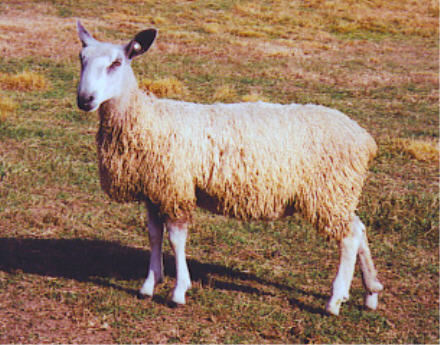
Bluefaced Leicester (US)

Bluefaced Leicester (UK)
Image courtesy of
Sheep Breeds of Cumbria

Blue Texels
Images courtesy of Reinhard Everts
and Flock Book of Blue Texels


Bond rams

Booroola Merino
Image Source: http://www.majusz.hu
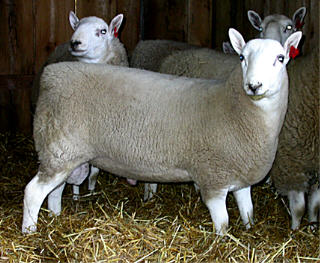
Cheviot rams

Border Cheviot lambs
Image Courtesy of
American Cheviot Sheep Society

Borderdale sheep
Images courtesy of
Graham Meadows
Ltd.

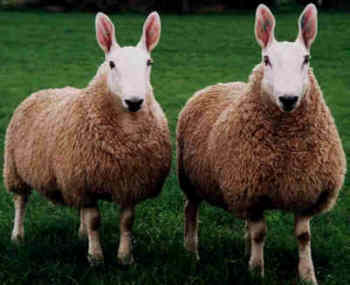
Border Leicester ewes
Photo courtesy of Society
of Border Leicester Sheep Breeders

Boreray ram
Image courtesy of Gaerllwyd Flocks

Boreray ewe
Image courtesy of Sheep of St. Kilda

Brecknock Hill Cheviot
Image courtesy of sheepkeeper33
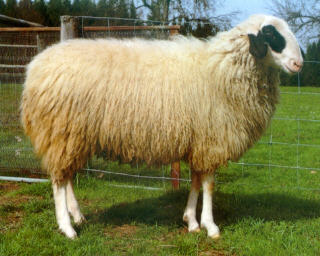
Brillenschaf ewe
Photo courtesy of
EAAP-Animal Genetic Bank

British Milk Sheep
Image source: British Sheep 8th edition

Brown Headed Meat Sheep
Photo courtesy of
EAAP-Animal Genetic Bank

Brown Mountain sheep
Photo courtesy of
EAAP-Animal Genetic Bank
|
Sheep Breeds Be-Br
- Belgian Milk Sheep
(Belgisch Melk schapp)
The Belgian Milk Sheep is strongly influenced by Friesian Milk
Sheep. In all probability, the Belgian Milk Sheep descends from
Flemish sheep. Since the 19th century, Flemish sheep were selected
for milk character. After the Second World War, the other milk
sheep breeds were added.
The Belgian Milk Sheep is a finely-built
sheep which stands on high legs. The body is wedge-shaped. The
head is covered with fine white hair. The abdomen is wooly, but
slightly hairy. A typical characteristic of Belgian Milk Sheep
is the so-called "rat-tail." The fertility of the breed
is high. The udder is well-developed and the animals give much
milk with a creamy taste.
Breed categories: dairy, rat-tail
Distribution: Europe
- Beltex
Beltex sheep were first introduced to Britain from Belgium in
1989. They originate from hybrid sheep bred in Belgium. The breed's
main characteristics are double-muscled highquarters, coupled
with fine bones which ensures maximum killing-out percentage of
the finished lamb.
The Beltex is primarily a terminal sire to
cross with British sheep and half-bred continental sheep. Beltex-sired
lambs are born with ease and are thrifty. Conformation is the
breed's main attribute in producing prime lamb. Finished lambs
yield a high killing-out percentage and a carcass with well-fleshed
legs, good eye muscle, and a long loin.
Breed categories: meat, medium wool
Distribution: Europe, United Kingdom, North American
Go to Beltex Sheep
Society=>
- Bergamasca
The Bergamasca originated in the North of Italy, possibly from
Sudanese sheep. They are a multi-purpose animal, raised for meat,
milk, and wool. They are prolific and produce and average of 250
kg of milk with 6 percent fat over a 6 month lactation period.
The Bergamasca is a basic breed of the Lop-eared Alpine group
and is polled. They are the foundation of the other Lop-eared
Alpine breeds of Fabrianese, Pavullese, Perugian Lowland, and
Zakynthos.
Breed categories: multi-purpose (meat, milk, and wool), coarse
wool
Distribution: Europe, South America
- Beulah Speckled-Faced
(Eppynt Hill and Beulah Speckled-Faced)
Speckled-face sheep have been bred on the hills of Eppynt, Llanafan,
Abergwesyn and Llanwrtyd Wells for over 100 years, without introduction
of female stock. On the hill, the ewes are normally purebred,
providing flock replacements, finished lambs for the meat trade,
or store lambs for finishing on lowland farms.
The Beulah ewe
is also idea for crossing with most continental rams, as well
as Suffolk and Down rams to produce high quality carcasses. Rams
have found great demand in many mountain flocks to improve size
and wool quality. The breed gives a fleece of very clean soft
handling wool. Ewes are hornless, as are the majority of rams.The
face is free from wool and distinctly speckled.
Breed categories: dual-purpose, medium wool, hill
Distribution: United Kingdom, Europe
Go to Beulah Speckled
Faced Sheep Society=>
- Berrichon du Cher
The Berrichon du Cher was established in the Berry region of France.
The original breed was crossed with a Merino in the mid-1780's.
Further improvements were made in the 1800's with the introduction
of the Dishely Leicester.
The Berrichon due Cher is a polled,
white-faced sheep with a medium fleece of high quality. Their
body is compact, well-muscled, and medium to large in status.
They are used primarily as a terminal sire.
Breed categories: meat, medium wool
Distribution: Europe, United Kingdom
Go to British Berrichon
due Cher Society=>
- Black Hawaiian
There is some controversy on how the Black Hawaiian breed was
started. Some say it is a cross of Mouflon and black hair sheep
from the Hawaiian islands. Others say they are Barbados with a
dilution of the red color gene making them black. They have a
thick black coat and are usually black all over, although some
sport a white muzzle.
Like the other species of sheep of this
type, the horns grow up, back, down, forward, up again, and then
tip out. The horns of the Black Hawaiian are jet black. Males
can weigh up to 140 to 150 pounds while females usually weigh
about half that much. They are raise primarily for trophy hunting.
Breed categories: hair, exotic
Distribution: United States
Go to United Horned Hair Sheep Association =>
- Blackheaded Persian
The Blackheaded Persian originated in the arid regions of east
Africa in what is now Somalia. It is one of the fat-rumped breeds
and both sexes are polled. Blackheaded Persians have a white body
and black head and neck with the two colors sharply distinguished.
The breed found its way to the tropics of the Caribbean region
via South Africa many years ago. The Caribbean population has
adapted well to the humid tropics. The Blackheaded Persian is
one of the breeds that was used to develop the Dorper.
Breed categories: hair, fat-rumped
Distribution: Africa, Caribbean, South America
- Black Welsh Mountain
In the Middle Ages, the mutton of black-fleeced Welsh Mountain
Sheep was prized for its richness and excellence and much sought-after
by merchants. During the mid-19th century, some breeders began
to select specifically for the black fleece color and the result
is the Black Welsh Mountain sheep.
The Black Welsh Mountain is
a small, black sheep with no wool on the face or on the legs below
the knee and hock. It is the only completely black breed of sheep
found in the United Kingdom. Introduced into the U.S. in 1972,
the fleece from the Black Welsh Mountain has generated special
interest among hand spinners and weavers.
Breed categories: primitive, medium wool
Distribution: United Kingdom, North America
Go to American Black Welsh
Mountain Sheep Association=>
- Bleu du Maine
(Bluefaced Maine)
The Blue du Maine originated in Western France in the region of
Mayenne. The breed was developed from crossing Leicester Longwool
and Wensleydale which were imported during a period from 1855
to 1880 with the now extinct Choletais breed. The Blue du Maine
is a large breed. The breed has no wool on its head or legs. The
face is dark gray or blue color. Both sexes are polled.
In comparing
the Blue du Maine with the Texel breed, they show a higher litter
size and age of sexual maturity. Their average daily gain, carcass
leanness, milk yield, and lambing interval are similar to the
Texel, but the Blue du Maine are lighter muscled.
Breed categories: meat, medium wool
Distribution: Europe, United Kingdom
Go to Blue
du Maine Sheep Society=>
Go to Blue du Maine Home
Page Nederland=>
- Bluefaced Leicester
The Bluefaced Leicester evolved near Hexham in the county of Northumberland,
England during the early 1900's. They are descendants of Robert
Bakewell’s improved Dishley Leicester. The breed originated
from Border Leicester individuals selected for the blue face (white
hairs on black skin) and finer fleeces. It was was developed as
a sire of high quality crossbred ewes.
The crossbred progeny of
the Bluefaced Leicester is the Mule, the ewe famous throughout
the U.K. as the best commercial breeding ewe on the market. Bluefaced
Leicesters were imported to Canada in the 1970's where they eventually
made their way to the United States. Frozen semen from the United
Kingdom is being used to expand the genetic base of the breed
in the U.S. and Canada.
Breed categories: long wool, dual-purpose
Distribution: United Kingdom, Australia, New Zealand, North America
Go Bluefaced Leicester Union
of North America=>
Go to Bluefaced Leicester Breeders
Association=>
Go to the Bluefaced
Leicester Sheep Breeders Association=>
- Blue Texel
The Blue Texel is a color variant of the normal white Texel sheep.
The Blue Texel came from white Texels who carry the color factor
"blue" with them. This factor is a recessive factor.
From a mating of two white Texels who both carry the factor for
the blue colour, there is a 25 percent chance blue lambs will
be born while a mating between a Blue Texel and another Blue Texel
always gives blue lambs. Texel sheep evolved as a result of crossbreeding
the Dutch polder sheep with several English breeds, such as Leicester,
Wensleydale, and Lincoln at the beginning of the 20th century.
Today, as a result of efficient selection, the Texel breed has
developed into a meat-type sheep of outstanding lean meat quality
that has become popular throughout the world as a sire of crossbred
slaughter lambs. When Texel lambs with a different color were
orginally born, most breeders were very ashamed of this. It was
not until the late 70's that some breeders started with the breeding
of this rare colored sheep: the Blue Texel.
Breed categories: meat, medium wool
Distribution: Netherlands, Europe
Go to Flockbook of
Blue Texels (blauwetexelaar.nl)=>
- Bond
Bonds evolved in Australia in 1909 as a dual-purpose breed, using
Peppin Merinos and imported Lincoln rams. Bonds are tall, long-bodied
sheep, heavy in the bone and with open faces and a robust constitution.
They produce bulky, long-stapled, bright 22-28 micron wool. Lambs
are long, lean, and fast growing. Bond rams weigh up to 150 kg
(330 lbs.).
Bond sheep are mainly found in the south east portion
of Australia. They have the ability to produce economic results
in a wide range of climatic conditions of rainfall from 350-1140
mm (14 to 45 inches).
Breed categories: dual-purpose
Distribution: Australia, New Zealand, China, Russia
Go to Australian
Bond Sheep Breeders Association=>
- Booroola Merino
The Booroola Merino was developed on the Southern Tablelands of
New South Wales, Australia. It differs from the normal Merino
in two ways. First, its fertlity is as high as any breed in the
world. The number of lambs born per ewe lambing is 2.4, with a
range of 1 to 6. Half-Booroola ewes on average wean 20 percent
more lambs than comparable Merinos under the same conditions.
Secondly, Booroolas have the ability to breed at most times of
the year, thus extending the breeding season.
The high prolifacy
of the Booroola Merino is due to the action of a single gene.
Booroola actually refers to a gene called the B gene (also called
F for fecundity). The B gene can be transferred into any breed
sheep and does not appear to be influenced by nutrition.
Breed categories: fine wool, prolific
Distribution: worldwide
- Border Cheviot
The Border Cheviot originated as a mountain breed, native to the
Cheviot Hills between Scotland and England, where the climate
is harsh and the conditions are rugged. Cheviots are extremely
hardy and can withstand harsh winters and graze well over hilly
pastures. They were bred to look after themselves. Recognized
as early as 1372, the breed is reported to have developed from
sheep that swam ashore from shipwrecked Spanish ships that fled
northward after the defeat of the Armada.
The Cheviot is a distinctive
white-faced sheep, with a wool-free face and legs, pricked ears,
black muzzle and black feet. It is a very alert, active sheep,
with a stylish, lively carriage. Cheviot wool has a distinctive
helical crimp, which gives it that highly desirable resilience.
Breed category: meat, hill
Distribution: United Kingdom, Europe, North America, Australia,
New Zealand
Go to American Cheviot
Sheep Society=>
- Borderdale
The Borderdale was developed in New Zealand. It is the result
of breeding the Border Leicester and Corriedale breeds and interbreeding
each generation until the F5 stage. Borderdales are a medium-large,
hardy, long-woolled breed, with a comparatively low susceptibility
to foot rot. They have a good growth rate. Ewes are often used
for crossbreeding with terminal sires from the meat breeds. Borderdales
are found mainly on the plains, dowlands, and foothills of Canterbury
(New Zealand).
Breed category: long wool, dual-purpose
Distribution: New Zealand
- Border Leicester
One of three distinct breeds of Leicester sheep, the Border Leicester
was founded in 1767 by George & Matthew Culley of Fenton,
Northumberland, England. They were friends of Robert Bakewell
and had access to his improved Leicesters. Some feel that the
Culley brothers developed the Border Leicester by crossing Bakewell's
improved Leicester rams with Teeswater ewes. Others argue that
Cheviot blood was introduced.
In any case, the breed was firmly
established in England by 1850 and Border Leicesters have now
surpassed the old English Leicester in popularity in the British
Isles and in other countries. Border Leicesters are moderately
prolific, good milkers, and mothers. They have been used throughout
the world to sire crossbred females. They yield a long-stapled,
lustrous, coarse wool that is much in demand by hand spinners.
Breed category: long wool, dual-purpose
Distribution: Worldwide
Go to The American Border
Leicester Association=>
Go to the Society
of Border Leicester Sheep Breeders=>
-
Boreray
The Boreray originated on the island of Boreray which is in
the St. Kilda group. The breed was developed during the late
19th century from Scottish Blackface and a Hebridean type of
Old Scottish Shortwool. The breed has been largely feral since
1930. The Boreray is a small breed with no wool on face or lower
legs. The extremities are black or tan colored.
The fleece is
white to light tan, but occasionally an individual animal will
be darker. Both sexes are horned. The ram's horns are large
and spiraled. Adult ewes weigh about 28 kg (62 lbs) and stand
55 cm (22 inches) at the withers.
Breed category: primitive, rare
Distribution: United Kingdom
Go to Sheep of St. Kilda =>
- Brecknock Hill Cheviot
(Brecon Cheviot, Sennybridge Cheviot)
The Brecknock Hill Cheviot was developed from the Scottish Cheviot that was introduced to Wales in the 1850's. Purebred Brecknock sheep come in all colors except spotted. They tend to be naturally small like their ancestors. However, their nature is much more gentle than the other Cheviot sheep.
In Wales, Brecknock Hill Cheviots are not part of the three Cheviot sizes . They are a Welsh hill breed of sheep. In the hills, they are kept in pure flocks for breeding replacements.
Brecknock Hill Cheviot have small erect ears with white faces and legs. They do have not wool on the face or below the knees or hock. Ewes and usualy rams are polled. They breed is recognized for its longevity.
Breed categories: medium wool, hill
Distribution: United Kingdom
Go to Brecknock Hill Sheep Society =>
- Brillenschaf
(Kärtner Brillenschaf, Spectacles Sheep, Carinthian)
The Brillenschaf from Carinthia is one of the endangered livestock
breeds in Austria. Since 1938, it has almost completely died
out. It is named for the eyeglass marks around its eyes, under
the eyes, and on its ears. It is a cross between the old Landschaf
breed with the Bergamasca and Paduaner Schaf.
It is a member
of the Alpine Mountain Sheep Breeds. The hardy, frugal Brillenschaf
can cope with high precipitation and is expert in climbing,
therefore it is used for grazing high alpine areas which are
inaccessible to cows.
Breed category: meat, coarse wool
Distribution: Europe
Go to Landsberger
Brillenschafe=>
Go to Verein der Kärntner
Brillenschafzüchter Alpen-Adria=>
- British Milk Sheep
British Milk Sheep are a composite breed whose exact make-up is
in conflict. Breeds that comprise the composite include the East
Friesian, Bluefaced Leicester, Polled Dorset, Lleyn, and perhaps
other breeds. The breed was established and released in 1980.
Animals of this breed are medium to large in size, polled, with
white, woolless, face and legs.
British Milksheep are the most
prolific breed in the United Kingdom with yearling litter size
averaging 2.21, 2-year-olds at 2.63 and 3.07 in mature ewes. A
milk yield of 650-900 liters (173 to 238 gal) has been reported
during a 300-day lactation. The milk solids is also particularly
high. British Milksheep produce a large, lean carcass.
Breed category: dairy
Distribution: United Kingdom, Canada
- Brown Headed Meat Sheep
(Braunköpfiges Fleischschaf)
The Braunköpfiges Fleischschaf is one of the four predominant
sheep breeds in Switzerland. It is the heaviest breed. It was
developed by crossing Oxfords from England and German Blackheaded
Mutton sheep onto landrace sheep. The breed is seasonal, lambing
once per year, usually in the winter, averaging 1.7 lambs.
Breed category: meat, medium wool
Distribution: Europe
- Brown Mountain
(Braunes Bergschaf)
The home of this breed is the alpine regions of Bavaria (Germany),
Tyrol (Austria), Southern Tyrol (Italy), and the Swiss Canton
of Engadine. In recent years, the Brown Mountain Sheep has gained
popularity beyond its original borders. The Brown Mountain Sheep
descended from the Tyrolean Steinschaf (Stone Sheep), which
can be of all colors, one color per sheep, and is rarely white.
The Braunes Bergschaf is a medium-sized sheep with a slender,
hornless head, and a Roman nose profile. Its ears are long,
broad, and hanging. It has strong legs with hard hoofs. It is
extremely hardy and shows no fear of heights. Non- seasonal
breeding is possible three times in two years, and twins are
the norm.
Breed category: long wool
Distribution: Europe
Go to Black-Brown Mountain Sheep Association =>
|